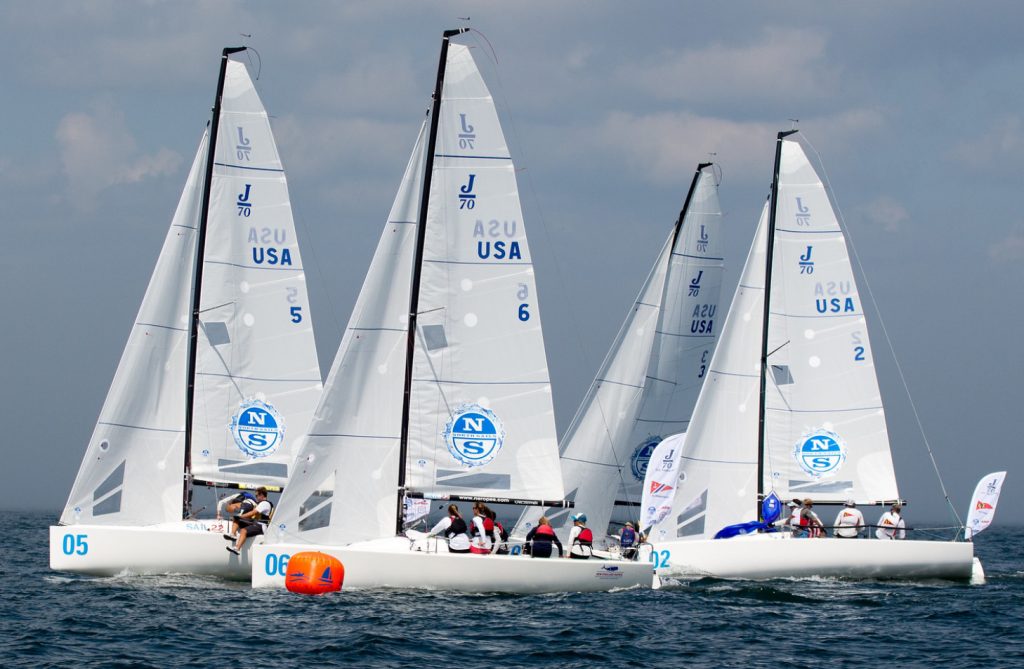
It’s important to think about strategy before you start sailing up the windward leg. For the first beat, develop a game plan before you get into the starting sequence. ©Julia Cronin/Outrageous Photography
It’s critical to have a good strategic plan for the windward leg because that is usually where the fleet gets farthest apart. When boats are on opposite sides of the beat, their separation can be huge, and even a small change in wind direction, pressure or current can have a huge impact on the fleet standings.
Of course, if the conditions never change you don’t have to worry about strategy. In that case, the race will be decided entirely on speed and tactics. But in reality the wind is always changing in both velocity and direction. In fact, the wind is a lot like a snowflake – it never follows exactly the same pattern in any two races.
Every race has a unique set of strategic conditions, and that’s why you need to develop a new strategy for each race. This gameplan must be customized to the particular conditions that you experience in that place at that particular time.
Strategic ingredients
There are many strategic variables that affect how quickly you get to the finish. For each variable, there are two important considerations. First, is that element uniform across your windward leg, or does it vary from side to side? For example, if the wind strength is exactly equal all across your cross, that variable will not influence your strategy. But if there’s a lot more wind on one side, that might be the determining factor in your gameplan.
The second consideration is how you expect each variable to change as you sail up the beat. For example, will the wind shift direction? If the wind direction remains steady, this will not affect your strategic planning. But unfortunately this is hardly ever the case. Almost all five strategic variables change continuously, and this is something that the top sailors are always expecting.
Gather information
In order to make a strategic plan for the beat, you need to gather as much information as possible about the five strategic areas. This data should come from knowledge of the past, observation of the present and forecasts of the future.
- Knowledge of the past – Before the regatta even starts, try to find out what the wind normally does in the area where you are sailing. Identifying common trends can be very helpful in planning a strategy. If you have raced in that venue many times before, hopefully you have a notebook filled with strategic notes. If you haven’t sailed there, talk to people who are “regulars” and see what kind of ‘local knowledge’ you can uncover. Other good sources of past wind trends are historical data from local airports and online data from meteorological buoys.
- Observation of the present – This will give you the most valid and valuable information, so it should be your primary source for strategic planning. Historical data and future forecasts are helpful, but there is no substitute for what you can see and feel in the course area just before and during your race.
So get out to the race area as early as possible and observe the wind, current and waves. Keep track of wind direction and velocity and look for trends. Don’t stop doing this when your warning signal is made – the wind never stops changing so you have to keep watching it throughout the race. ■
This article originally appeared in David Dellenbaugh’s Speed & Smarts, The newsletter of how-to tips for racing sailors. If you want to sail faster and smarter, log onto SpeedandSmarts.com..



